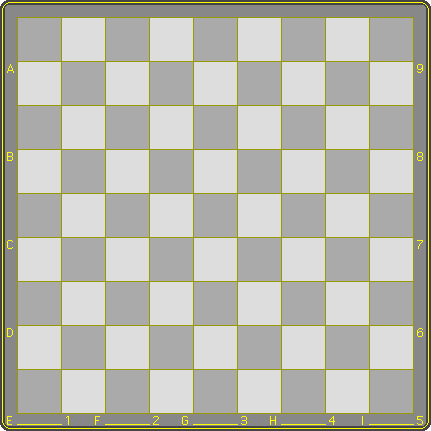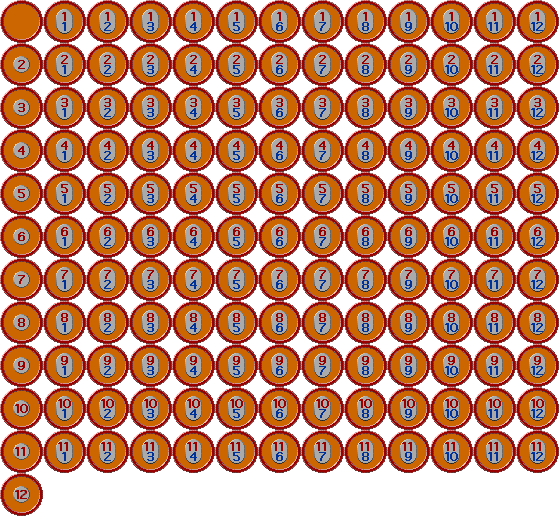Page 1 of 2
If there's mention of men and pieces, a man is single, while a piece consists of a number of stacked men. If the difference doesn't matter, a man may also be referred to as a piece, for instance 'the number of pieces on the board'.
On the board there are squares and lines. These are always dark squares and oblique lines, like the 'e-line' or the '5-line'. A square is identified as the intersection of two lines. The a- and i-line and the 1- and 9-line each count but one square. The board is initially empty.
Object
If a player has no pieces left he loses the game.
 |
|
- There are two phases: the entering phase and the movement phase.
- Capture is obligatory and takes precedence in both phases.
- A player captures the top man of an opponent's piece on an adjacent square, by jumping the piece with his own piece, taking the top man along under it, and landing on the square beyond, which must be vacant for the capture to take place.
- Majority capture precedes: if the capturing piece can continue its course in a similar fashion in any direction except a 180 degrees turn, it must do so, taking care beforehand to establish the route that brings the maximum number of captured men. If there are more ways than one to meet this criterion, the player is free to choose.
- In a multiple capture the capturing piece may visit a square more than once as well as jump a piece more than once!
- Inducing a capture by the opponent is called feeding. Feeding a weak piece to eventually capture its guard(s) and liberate its prisoners is a key-concept in Emergo.
The capture of a single man reduces the number of pieces on the board by one. Since there is no mechanism to increase the number of pieces, a game of Emergo is always 'climbing upward', that is, the number of pieces steadily decreases while their size increases. This is the root of a game's eventual termination and its decisiveness.
| ||||||||
| This sequence is only to illustrate mechanics. It is not a game position (because then White would have to enter a man). White moves fe4 and Black must take the majority capture hd4x after which White, also under the obligation of majority capture, must capture clockwise. Anti-clockwise capture would end on the square of origin and bring only four men (although the applet doesn't enforce it and White wins just the same!). As it is the move ends on c4: White liberates a piece of two and captures five men under a cap of three. | ||||||||





